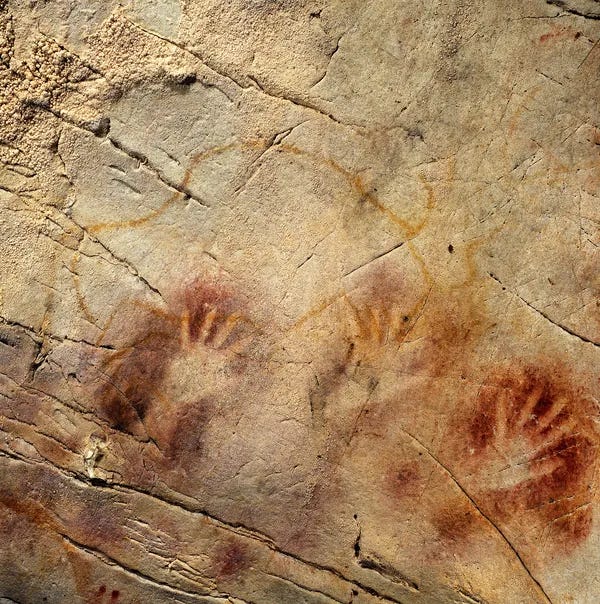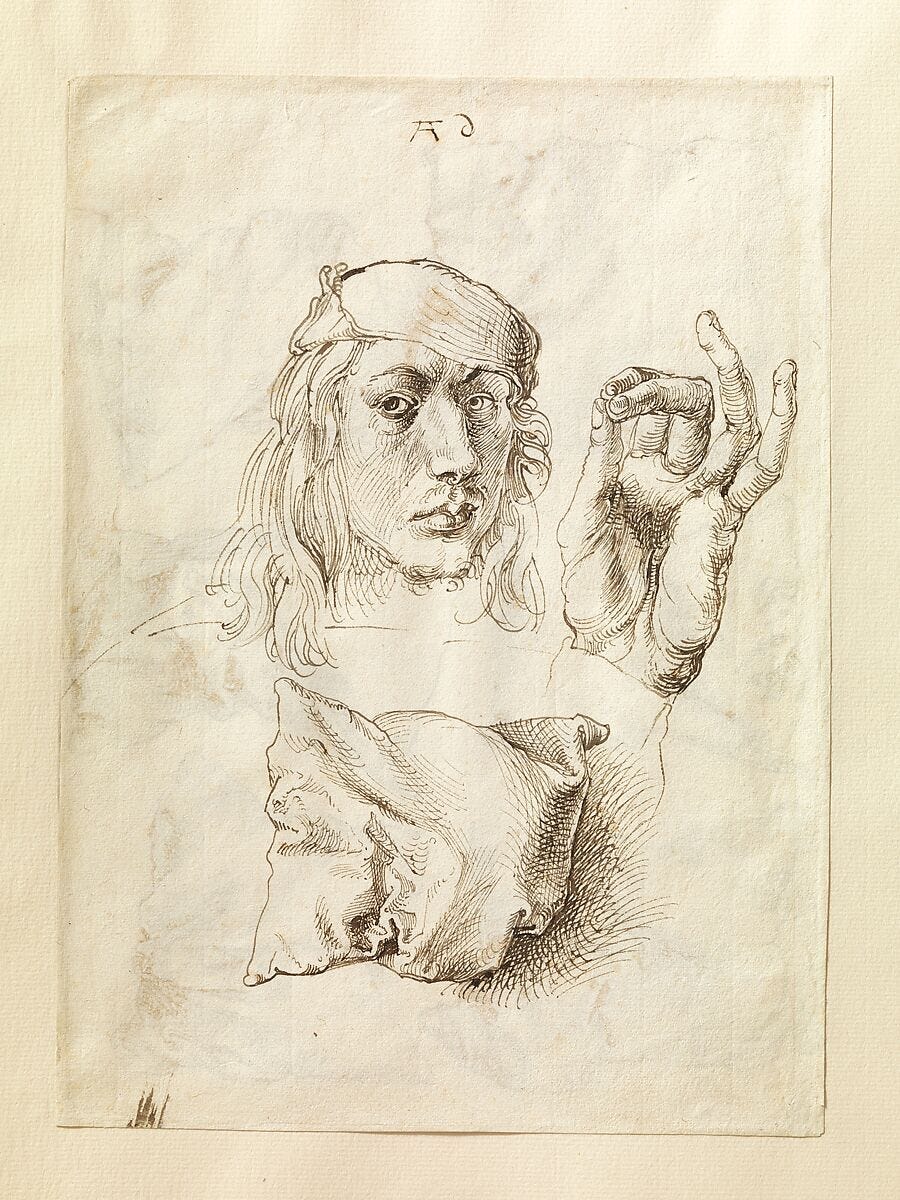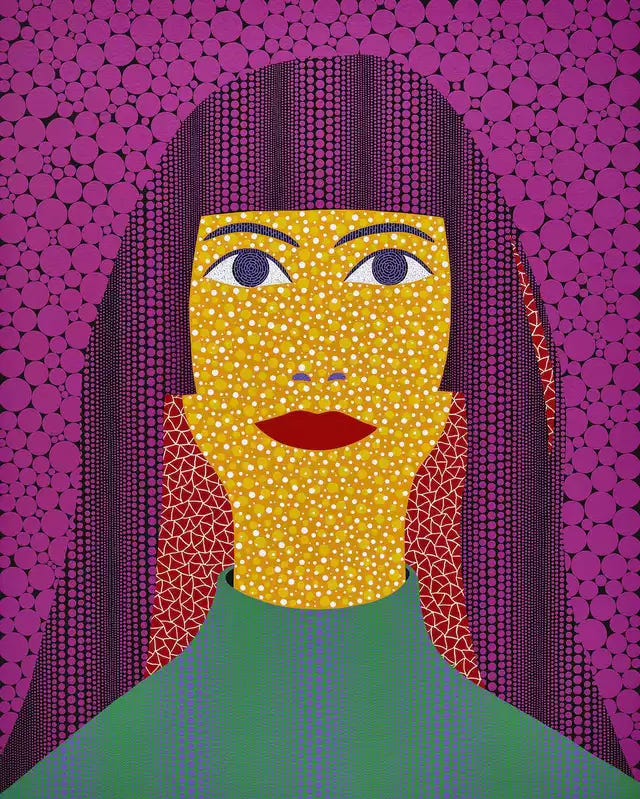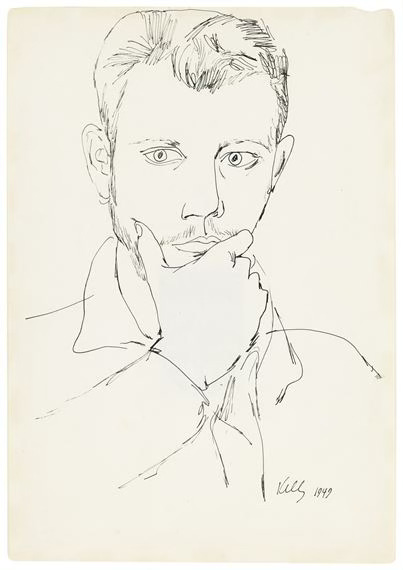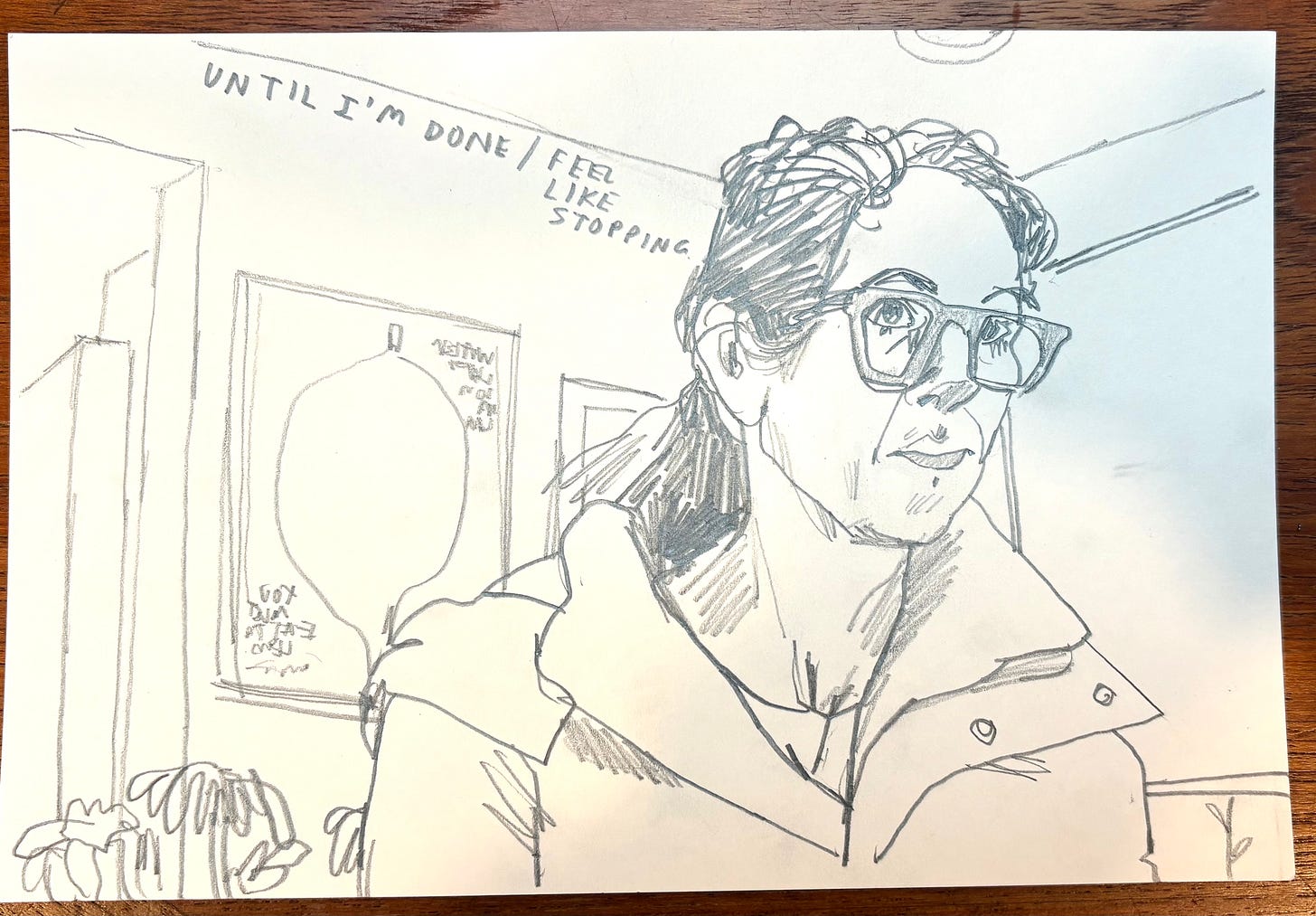Hello, my dear GUT friends.
Fun announcement: I get lots of exciting drawing, creativity, and wellbeing-related opportunities coming across my radar, and I’ve long wanted a way to share them with you, the GUT community. Starting today, we’re trying a new thing: GUT members (paying subscribers) will find a new DrawTogether Community Bulletin Board at the end of our Sunday dispatches. This section will feature a curated selection of drawing/creativity related announcements that I know GUT members will love. Stuff like workshops, retreats, events, discounts, etc. This week the community bulletin board features a free artist’s retreat for the environmentally minded, and a color workshop in my new Bay Area art space.
If there’s something you’d like to post on the DT community bulletin board, email it to Community@DrawTogether.Studio. We can’t promise everything will get in (it’s curated by yours truly) but hopefully we can co-create a good shoutout-space for exciting announcements. Let’s see how it goes!
Alright, onto this week’s lesson.
Self-Portraits
When people first start drawing they often say, “I don’t know what to draw - there are no good subjects!” But after just a few weeks, that becomes, “I don’t know what to draw - there are too many good subjects!”
Something happens when we start to draw regulary. We notice more. We pay closer attention. We see things in relationship to each other (composition!) We observe things like texture. Lines and shapes catch our eyes. Shadows become forms. We SEE so much more.
And yet, still, sometimes all that "extra Seeing” makes it hard to figure out what to focus on. What subject should we choose?? And, if you enjoy drawing people like I do, often our models (aka family and friends and strangers in coffee shops) won’t work on our schedules. They refuse to hold still! So frustrating. So where can we look when want something to draw, or we want a good live model, but our dog won’t stay still?
Answer: Look in the mirror.
Self-Portrait History, Abridged
Prehistoric selfies
We humans have been drawing pictures ourselves for as long as we’ve been making art. In fact, the earliest known drawing is a self-portrait.
The first known examples of artists making any kind of drawing were outlines of artists’ own hands on the inside of a cave in Cantabria, Spain. Now known as “the Panel of the Hands”, these self-portraits were created over 40,000 years ago. While they may not be drawn portraits of the artist’s faces per se, these ancient drawers used pigment and a surface to create a representation of their unique body and self. That, my friends, is a self-portrait.
Renaissance Selfies
Flash forward to the 1490’s. A profoundly talented artist named Durer is drawing pictures of himself in a way people never have before.
At 22 years old, Durer uses pen and ink and a crosshatching technique to draw his hands, a pillow, and his own face, deadpan, staring directly at the viewer - which is to say, himself. Durer probably used a mirror to draw this picture, and it is likely a sketch for a painted self-portrait he would later create. This drawing is one of the earliest known drawn self-portraits in the history of western art.
Democratic Selfies
For thousands of years, portraits were only created by artists of/for people who had enough wealth and power to afford it. A portrait was a status symbol. As art materials became less expensive and artists were able to explore their own interests, the spotlight began to swing away from the people standing on society’s main stage and toward the people behind the curtain. This included the artists themselves.
You may or may not recognize some of these famous self-portraits by artists who may or may not have been well recognized in their time. Today, when we think of these artists, we often imagine faces we got to know through their own self-portraits.

Contemporary Selfies
Today, artists around the world use themselves as subjects. Self-portraits are a way to practice craft, explore our identities, and represent ourselves to the world.
In 1897, African American scholar and activist Du Bois suggested that Black people in the United States and around the world experience two different identities: how they see themselves, and how society sees them. Both are a living reality. He called this a “double consciousness” around identities. While certainly true for Black folks, this misalignment is something many people experience to varying degrees. Self-portraits are a place to explore the tension of these realities, and allow us to represent the many facets of our personal and social experiences.
Bonus: when it comes to drawing, we are our most reliable subject. We are always ready to model for ourselves when we are ready to draw!
A quick contemporary selfie survey:
Let’s take a quick look at some more recent/current artists who are drawing, collaging and painting self-portraits in new and inspiring ways.
Ruth Asawa used pen, brush and ink to create a self-portait of her drawing.

Yayoi Kusama uses texture and color to represent her internal and external self in this self-portrait.
Chris Ofili cropped his painted self-portrait in such a way that shows only a portion of his face and body.
Nina Chanel Abney uses collage and screen printing to create a full size self-portraits consisting of strong shapes, colors and textures.

Ellsworth Kelly (who we have discussed a lot before in terms of abstract shape and controur drawings) made hundreds of pencil and pen drawings, including many self-portraits. The more Kelly drew, the simpler and more economical his drawings became.
Everlyn Nicodemus creates a self-portrait by integrating several faces, or aspects of the self, to become one person: herself.
I share these with you to show you the wide range of approaches to drawn and painted self-portraits. How would you explore your own internal identity? And how you would present yourself to the world?
For today’s assignment, we are going to use our old friend The Timer to approach what can feel like a daunting subject: the self-portrait. We are breaking down our ten minutes into three short chunks. you will need three pieces of paper, a mirror or a phone/ipad with a camera on it, and some materials to draw with. And, of course, a timer.
Keep reading with a 7-day free trial
Subscribe to DrawTogether with WendyMac to keep reading this post and get 7 days of free access to the full post archives.



